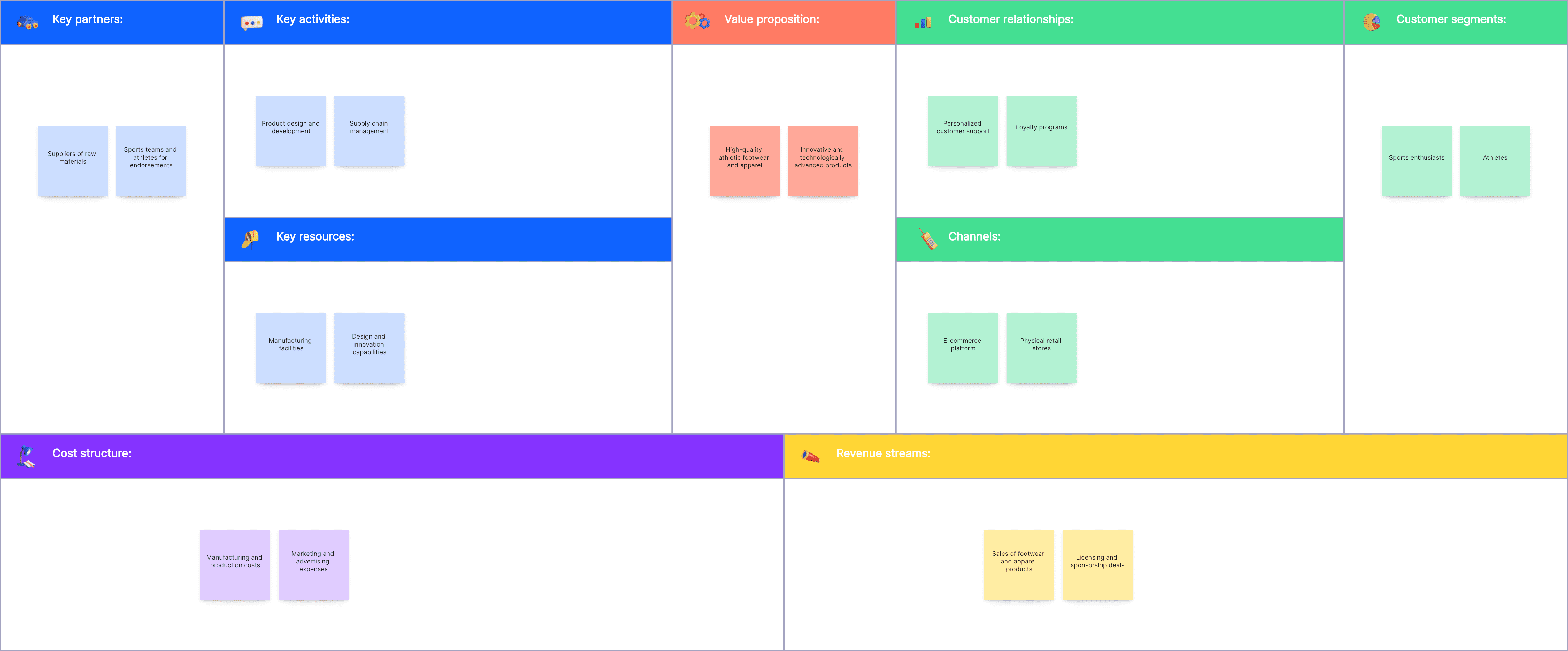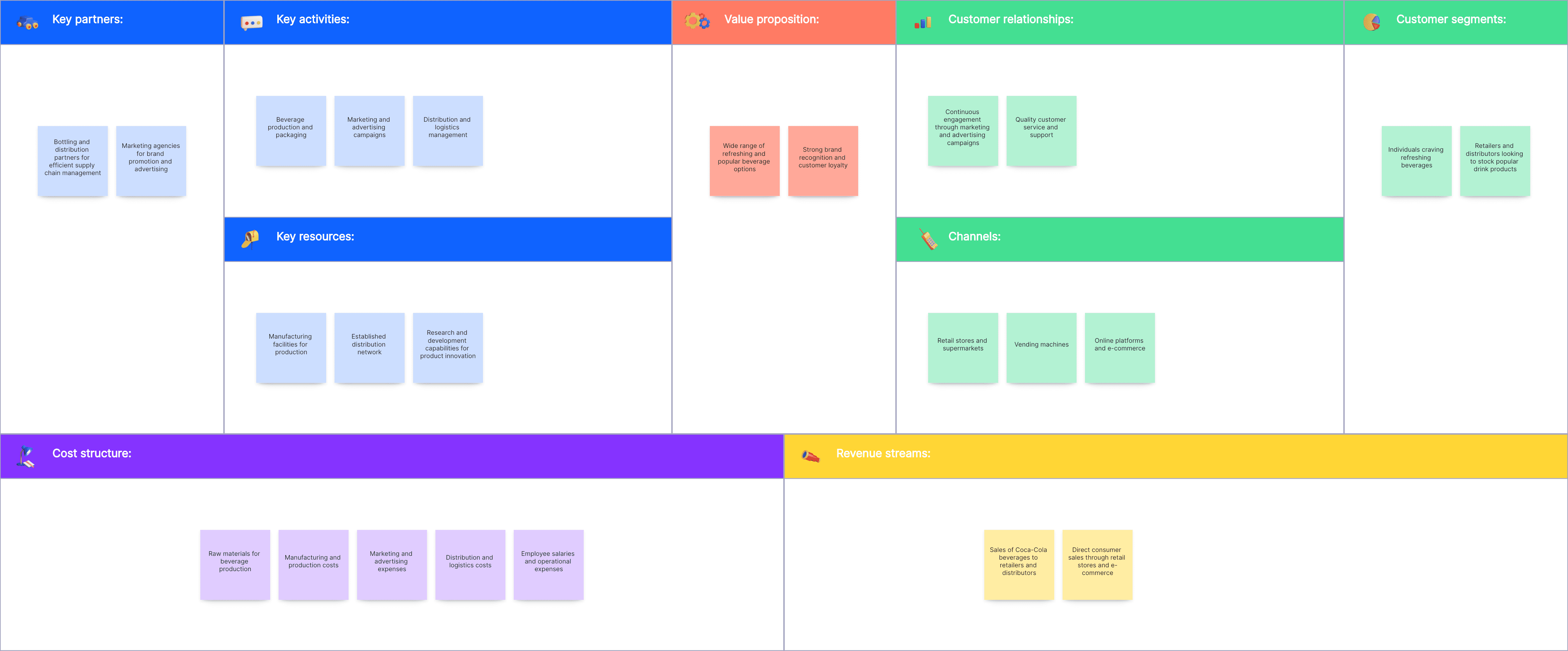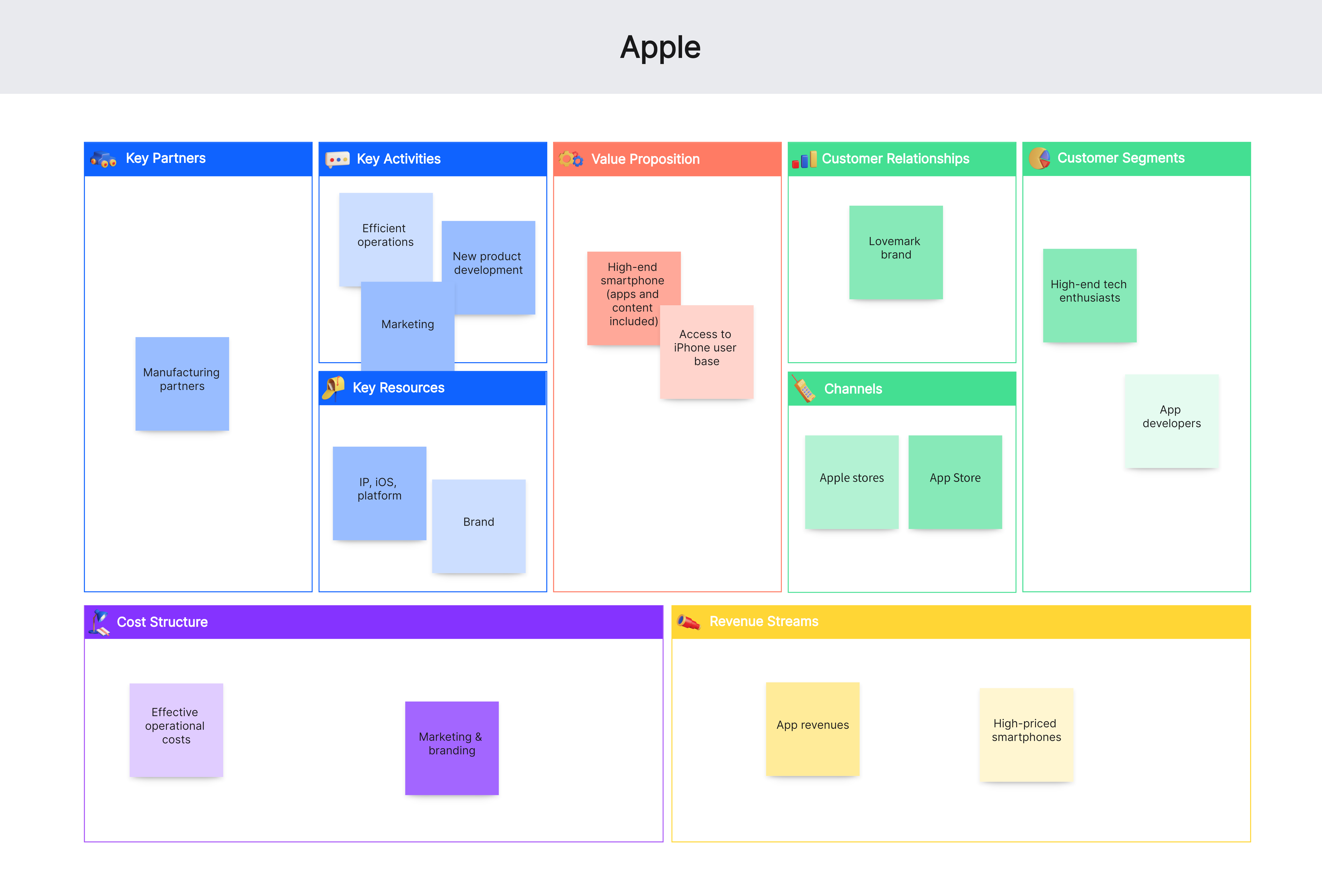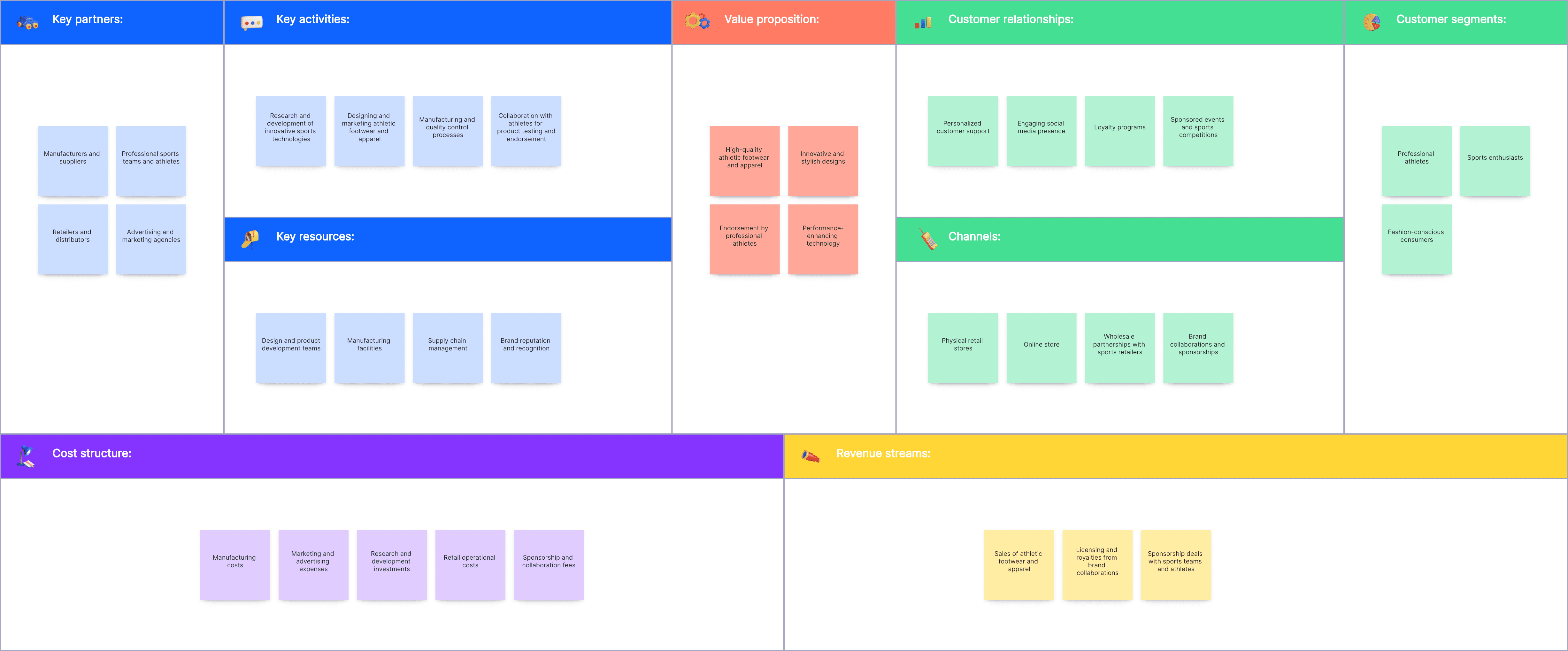Creating a Business Model Canvas is a critical step for startups and established businesses alike. It provides an invaluable visual representation of the business strategy, outlining your key partners, activities, resources, and the value proposition of your product or service. In this comprehensive guide, we'll detail everything you need to know about creating a high-quality Business Model Canvas, including its definition, when and why to use it, its key components, and a step-by-step guide on creating one. Finally, we'll share tips on using a Business Model Canvas template in Boardmix.

Adidas Business Model Canvas
What is a Business Model Canvas?
A Business Model Canvas is a strategic tool used by organizations to develop or refine their business model. It provides a one-page layout that is easy to understand and communicate, with elements describing a company's value proposition, infrastructure, customers, and finances. Essentially, it depicts the moving parts of a business system that create and deliver value.

Coca-cola Business Model Canvas
When to Use a Business Model Canvas?
The Business Model Canvas can be employed during any stage of a business. For startups, it can be used at the very outset to outline the business idea in an easily understandable format. Established businesses can use it to realign strategies or when launching new products. The canvas is also a valuable tool during mergers and acquisitions to evaluate the compatibility of different business models.

Apple Business Model Canvas
What are the Key Components of a Business Model Canvas?
The Business Model Canvas is composed of nine building blocks. These include Customer Segments, Value Propositions, Channels, Customer Relationships, Revenue Streams, Key Resources, Key Activities, Key Partnerships, and Cost Structure. Understanding each of these components in detail will provide a more holistic picture of your business strategy.

Nike Business Model Canvas
Steps to Create an Effective Business Model Canvas
Creating a successful Business Model Canvas is a process that requires strategic thought and careful consideration. Here's a step-by-step guide:
- Identify your Customer Segments: Start by identifying who your customers are. Differentiate them into various groups according to their unique characteristics and needs. Ask yourself, who are you creating value for? Which groups of people are most likely to benefit from your product or service?
- Determine your Value Propositions: Identify the unique selling points that distinguish your product or service from the competition. Why should customers buy from you instead of your competitors? Your value proposition could be anything that makes your product or service attractive to your customer segments.
- Define your Channels: Channels are how you communicate with and reach your customer segments. Determine the most effective channels that can deliver your value proposition to your customer segments. Channels can be both direct and indirect, depending on whether they are under your control or not.
- Outline Customer Relationships: Define the type of relationship that you aim to establish with your customer segments. The relationship could be personal, automated, self-service, or involve user communities. This depends on the customer demand and your company's capabilities.
- Decide on Revenue Streams: Identify how your business will generate income. Will you make money through direct sales, licensing, subscription, or any other means? Define each revenue stream, considering the price mechanism, whether it's fixed pricing or dynamic pricing.
- List Key Resources: These are the crucial assets required to operate your business model. They could include intellectual resources like patents, financial resources, human resources, or physical assets such as buildings or equipment.
- Define Key Activities: Identify the essential activities required to deliver your value proposition, serve your customer segments and maintain customer relationships. Depending on your type of business model, these could include production, problem-solving, or network/platform development.
- Identify Key Partnerships: Outline any partnerships that contribute to your business model. This includes partnerships with suppliers or distributors that enable your business model to operate more smoothly.
- Determine Cost Structure: Finally, analyze all the costs involved in operating your business model. Take into account both fixed and variable costs to have a clear idea of the cost structure of your business.

Airbnb Business Model Canvas
Tips to Use a Business Model Canvas Template in Boardmix
After defining the components and crafting the Business Model Canvas, it's time to bring it to life using a template in Boardmix. Here are a few tips to make the most out of this tool:
- Utilize Sticky Notes: Boardmix allows you to use virtual sticky notes for each canvas component. This feature is very useful as it makes modifications seamless and flexible. As you iterate on your model or pivot your business, you can easily move around these notes or add new ones.
- Define Each Component Clearly: Be precise with your wording when defining each component of your canvas in Boardmix. The aim is to make your business strategy as understandable as possible for anyone who views it. Clear, concise descriptions will help maintain focus and ensure that the main ideas of your model are communicated effectively.
- Don't Rush the Process: Creating a business model is not an overnight task, but rather a process that involves thoughtful reflection and iteration. Spend ample time brainstorming each component of your canvas, refining them as you progress, and allowing for changes to be made as necessary.
- Test and Validate Assumptions: It's crucial not to let assumptions become accepted facts without validation. Regularly test your business model assumptions with real-world data and feedback. If an assumption proves incorrect, be ready to adjust your model in Boardmix accordingly.
- Keep It Dynamic: A Business Model Canvases not a static document but should evolve with your business. Regularly revisit and update your canvas in Boardmix, keeping it as a live document that reflects the current state and direction of your business.
Embarking on the journey of creating a Business Model Canvas can be daunting, but it doesn't have to be. Utilize this guide, take advantage of the tools available, and you're well on your way to creating an effective business model canvas that will underpin your business strategy for years to come.








